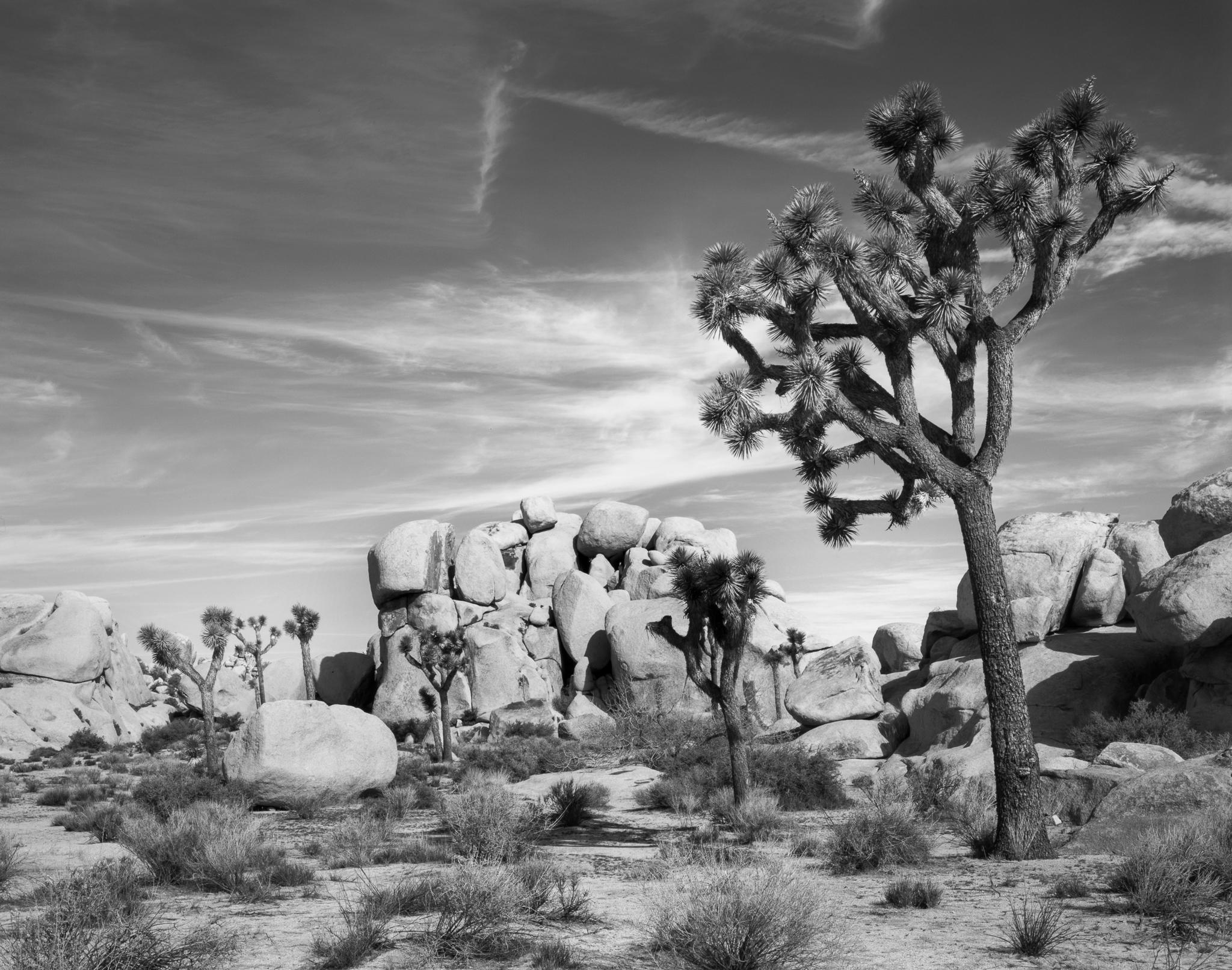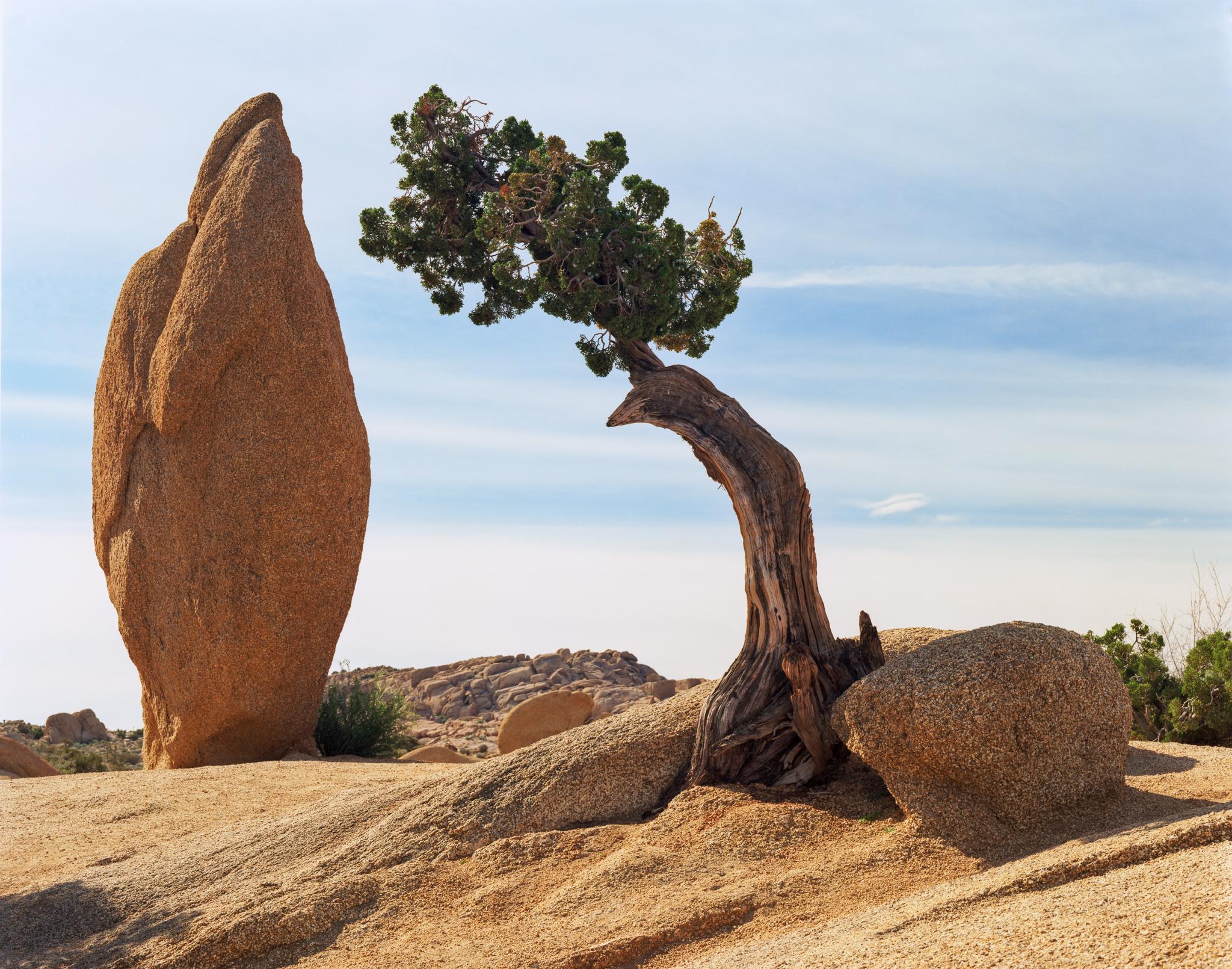Joshua Tree National Park Fine Art Prints
Unique desert landscapes where the Mojave and Colorado deserts meet, featuring iconic Joshua trees and dramatic rock formations.
Museum-quality archival prints • Multiple sizes available • Limited editions
Showing 2 available prints from the Joshua Tree collection
Joshua Tree National Park Landscape Photography
Joshua Trees & Desert Flora
The park's namesake Joshua trees (Yucca brevifolia) create otherworldly desert scenes found nowhere else on Earth. These distinctive plants, actually tree-like yuccas rather than true trees, can live for hundreds of years and grow up to 40 feet tall. Their twisted, spiky forms silhouetted against desert sunsets create iconic compositions that have made Joshua Tree one of America's most photographed national parks.
Joshua trees thrive only in the Mojave Desert ecosystem between 2,000 and 6,000 feet elevation, making this park one of the few places to photograph these remarkable plants in their natural habitat. The trees' sculptural forms and dramatic growth patterns create endless opportunities for landscape photography, especially during the golden hours when warm light enhances their natural textures.
Rock Formations & Boulder Fields
Joshua Tree features massive monzogranite boulder formations that create dramatic landscapes perfect for large format photography. These ancient rock formations, shaped by erosion over millions of years, stack in gravity-defying piles that frame desert vistas and create intimate desert scenes. Popular areas like Jumbo Rocks and Skull Rock showcase the park's unique geological character.
The park's rock formations attract rock climbers from around the world while providing landscape photographers with textured foregrounds and dramatic compositions. The interplay between massive boulders and delicate desert flora creates visual contrasts that define Joshua Tree's photographic appeal.
Desert Ecosystem Transition Zone
Joshua Tree National Park occupies a unique ecological position where two desert ecosystems meet. The higher elevation western portion features Mojave Desert vegetation including Joshua trees and creosote bushes, while the lower eastern section showcases Colorado Desert flora like ocotillo and cholla cacti. This transition creates diverse photographic opportunities within a single park, from dense Joshua tree forests to stark desert flats.
The elevation difference between the two desert zones creates distinct microclimates and seasonal variations. Spring wildflower blooms vary by elevation and timing, with lower elevations blooming first followed by higher areas. This extended bloom season provides multiple opportunities for capturing desert wildflowers against backdrops of Joshua trees and granite boulders.
Night Sky & Astrophotography
Joshua Tree's dark skies and minimal light pollution make it one of Southern California's premier locations for night sky photography. The park's designation as an International Dark Sky Park recognizes its exceptional stargazing conditions. Photographing Joshua trees silhouetted against the Milky Way creates dramatic compositions that combine earthly and celestial subjects in ways impossible in light-polluted urban areas.
Winter months offer the best conditions for astrophotography, with clear skies and comfortable evening temperatures. The park's unique rock formations and Joshua trees provide compelling foreground subjects for night sky compositions, creating opportunities to capture the desert landscape in an entirely different light than typical daytime photography.
Fine Art Desert Prints
Joshua Tree National Park photographs are printed using archival techniques specifically designed to capture the subtle tonalities and warm desert colors characteristic of this unique landscape. Each print preserves the fine details of Joshua tree bark textures and granite rock surfaces that make large format photography essential for capturing this park's character.
Limited edition prints available in sizes from 11x14 inch intimate desert studies to large 40x50 inch pieces that showcase the dramatic scale of Joshua Tree's boulder formations. All prints include certificates of authenticity and are produced on museum-quality materials suitable for serious collectors of desert landscape photography.
Joshua Tree Photography Frequently Asked Questions
What are the best locations for Joshua Tree photography?
Joshua Tree's top photography locations include Jumbo Rocks, Hidden Valley, Cholla Cactus Garden, Keys View, and Skull Rock. Each area offers unique combinations of Joshua trees, rock formations, and desert vistas. Keys View provides panoramic desert views, while Jumbo Rocks offers intimate rock and tree compositions.
When is the best time for Joshua Tree landscape photography?
Spring (March-May) is ideal for wildflower blooms and comfortable temperatures. Fall (October-November) offers excellent light and weather. Winter provides clear skies perfect for astrophotography. Summer should be avoided due to extreme heat (100°F+). Golden hour light in any season creates dramatic Joshua tree silhouettes.
Are Joshua Tree prints suitable for modern interiors?
Yes, Joshua Tree landscape photography prints are excellent for contemporary design. The sculptural forms of Joshua trees and abstract patterns of boulder fields complement modern aesthetics. The warm desert tones and minimalist compositions work particularly well in mid-century modern and southwestern design schemes.
What makes Joshua Tree landscape photography unique?
Joshua Tree offers photographic opportunities unavailable elsewhere. The unique Joshua trees exist only in the Mojave Desert, and the park's combination of massive granite boulders, two distinct desert ecosystems, and International Dark Sky designation creates diverse subjects from intimate desert scenes to dramatic night sky compositions.


